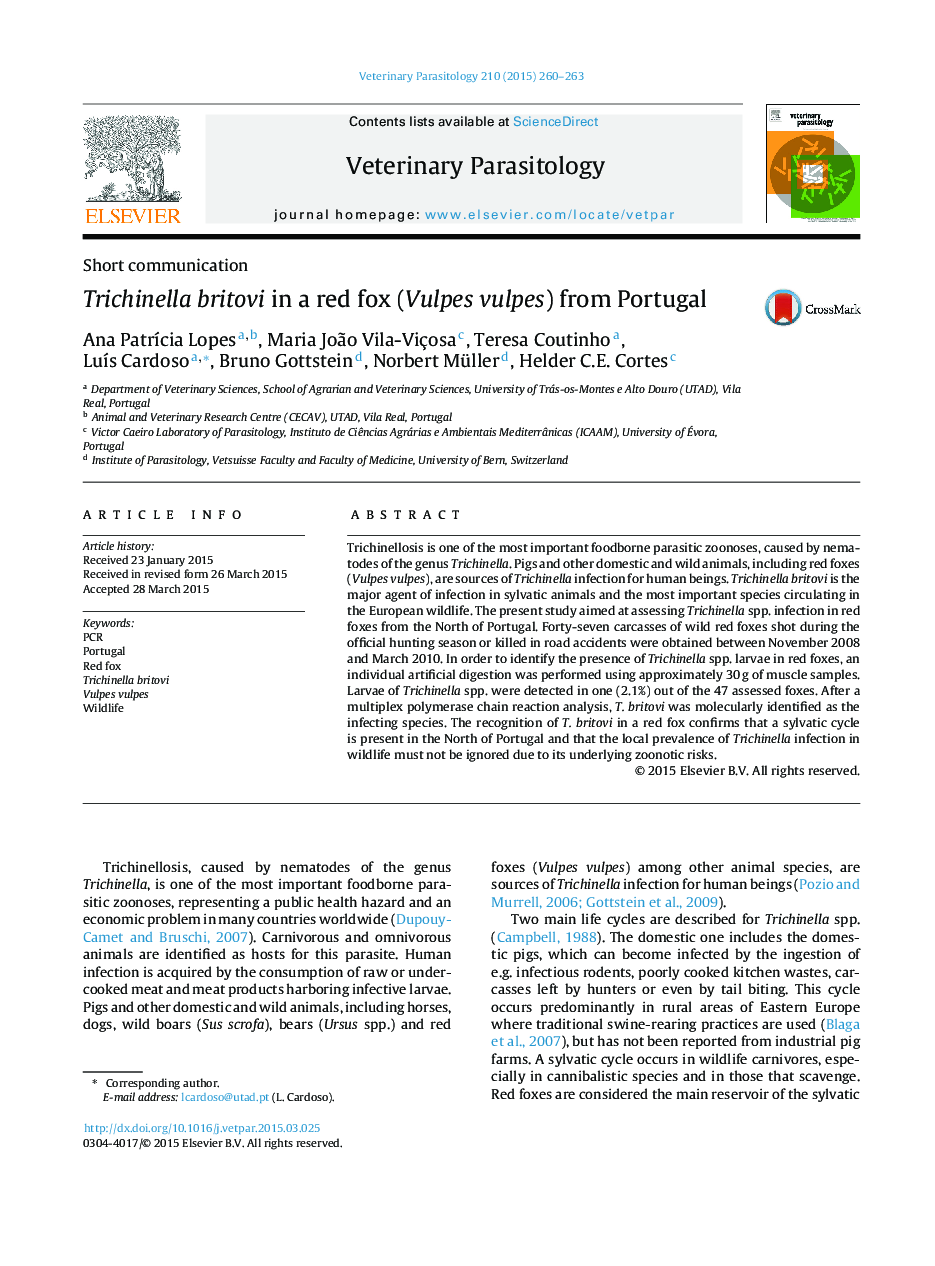| Article ID | Journal | Published Year | Pages | File Type |
|---|---|---|---|---|
| 5802474 | Veterinary Parasitology | 2015 | 4 Pages |
â¢Data available on Trichinella spp. is limited in animals and humans in Portugal.â¢Trichinella britovi was found in red foxes (Vulpes vulpes) from northern Portugal.â¢A sylvatic cycle is present in the study area with an underlying risk for humans.
Trichinellosis is one of the most important foodborne parasitic zoonoses, caused by nematodes of the genus Trichinella. Pigs and other domestic and wild animals, including red foxes (Vulpes vulpes), are sources of Trichinella infection for human beings. Trichinella britovi is the major agent of infection in sylvatic animals and the most important species circulating in the European wildlife. The present study aimed at assessing Trichinella spp. infection in red foxes from the North of Portugal. Forty-seven carcasses of wild red foxes shot during the official hunting season or killed in road accidents were obtained between November 2008 and March 2010. In order to identify the presence of Trichinella spp. larvae in red foxes, an individual artificial digestion was performed using approximately 30Â g of muscle samples. Larvae of Trichinella spp. were detected in one (2.1%) out of the 47 assessed foxes. After a multiplex polymerase chain reaction analysis, T. britovi was molecularly identified as the infecting species. The recognition of T. britovi in a red fox confirms that a sylvatic cycle is present in the North of Portugal and that the local prevalence of Trichinella infection in wildlife must not be ignored due to its underlying zoonotic risks.
Graphical abstractDownload full-size image
